detail profile heinz emigholz
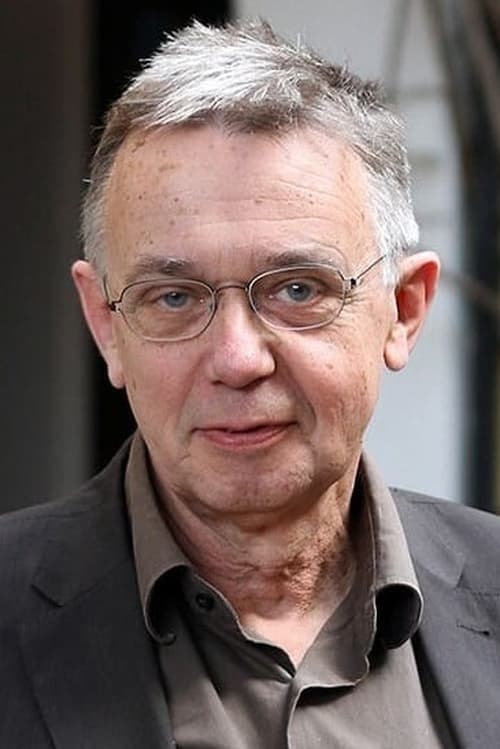
Riwayat Hidup
Born in 1948 near Bremen in Germany, Heinz Emigholz trained first as a draftsman before studying philosophy and literature in Hamburg.
He began filmmaking in 1968 and has worked since 1973 as a filmmaker, artist, writer and producer in Germany and the USA.
In 1974 he started his encyclopaedic drawing series The Basis of Make-Up .
He looks back on numerous exhibitions, retrospectives, lectures and publications.
In 1984 he started his film series Photography and beyond.
He has held a professorship in Experimental Filmmaking at the Universität der Künste Berlin from 1993 to 2013, and co-founded the Institute for Time-based Media and the program Art and Media, there.
Since 2012 member of the Academy of Arts in Berlin.
In 2003 Filmgalerie 451 started an edition of all his films on DVD.
Publications a.
o.
: Krieg der Augen, Kreuz der Sinne (War of Eyes, Cross of Senses), Seit Freud gesagt hat, der Künstler heile seine Neurose selbst, heilen die Künstler ihre Neurosen selbst (Since Freud Said That the Artist Heals His Neuroses Himself, Artists Have Been Healing Their Neuroses Themselves), Normalsatz – Siebzehn Filme (Ordinary Sentence – Seventeen Films) and Das schwarze Schamquadrat (The Black Sqare of Shame) (all four books at Verlag Martin Schmitz); Die Basis des Make-Up (I) and (II), Der Begnadete Meier (Grace Jones), Kleine Enzyklopädie der Photographie (Little Encyclopaedia of Photography) and Die Basis des Make-Up (III) (in Die Republik No.
68-71, 76-78, 89-91, 94-97 and 123-125); Sense of Architecture with more than 600 photographs.
Info Pribadi
Peran Yang Di Mainkan Heinz Emigholz
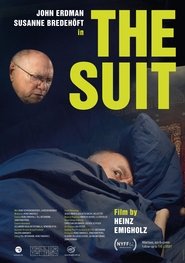 That loquacious cynic known as Old...
That loquacious cynic known as Old...The Suit 2024
That loquacious cynic known as “Old White Male,” played by John Erdman in Heinz Emigholz’s 2020 film The Lobby, returns in this delirious, sci-fi-comic follow-up that covers an even wider spectrum of human absurdity and wrestles with the biggest question mark of all: The Future.
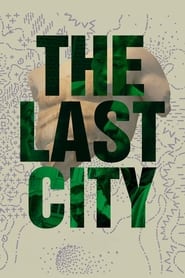 An archaeologist and a weapons designer...
An archaeologist and a weapons designer...The Last City 2021
An archaeologist and a weapons designer, who knew each other in a previous life as a filmmaker and a psychoanalyst, meet at an excavation site in the Negev desert and begin a conversation about love and war, which they continue in the Israeli city of Be’er Sheva. A series of encounters with alternating actors in different roles ensues, which leads the viewer through the cities of Athens, Berlin, Hong Kong and São Paulo. Among those appearing are: an old artist who meets his younger self; a mother who lives with her two grown-up sons, a priest and a policeman; a Chinese and a Japanese woman; a curator and a cosmologist.
![film Dieste [Uruguay] 2017 movie Dieste [Uruguay] 2017](https://image.tmdb.org/t/p/w185/iXdwycGTb426h8wf5Ogr8PD0UDh.jpg) The final part of Heinz Emigholzs...
The final part of Heinz Emigholzs...Dieste [Uruguay] 2017
The final part of Heinz Emigholz’s "Streetscapes" series is again a triptych. A prologue examines three buildings from the 1930s designed by Julio Vilamajó in Montevideo which could have inspired the work of Eladio Dieste, the subject of the main part of the film. The industrial and functional buildings presented span the period from 1955 to 1994; their organic brick construction is astonishing and inspiring.
![film Streetscapes [Dialogue] 2017 movie Streetscapes [Dialogue] 2017](https://image.tmdb.org/t/p/w185/lbaDCCZJ6xwvNLO5qFDBmjnjaOH.jpg) A film director confides in his...
A film director confides in his...Streetscapes [Dialogue] 2017
A film director confides in his interlocutor. He talks about the working process, about creative blocks, about artistic crises and expressive forces. At some point, the idea takes hold that this conversation could be turned into a film. And this is the very film we’re watching the two of them in.
![film 2 + 2 = 22 [The Alphabet] 2017 movie 2 + 2 = 22 [The Alphabet] 2017](https://image.tmdb.org/t/p/w185/xZmFnEC2gNQq2NjIpoLYaws5TRO.jpg) Worndown pavements broken paving stones Trees...
Worndown pavements broken paving stones Trees...2 + 2 = 22 [The Alphabet] 2017
Worn-down pavements, broken paving stones. Trees that jut out of the concrete, casting shadows on to crumbling façades. The centre of Tbilisi in the summer of 2013. Glimpses of side and main streets, over railings and under balconies, of an architectural cacophony. The voiceover spoken by Natja Brunckhorst reflects on the nature of streets and public spaces.
![film Bickels [Socialism] 2016 movie Bickels [Socialism] 2016](https://image.tmdb.org/t/p/w185/7l3LMzod0pJoDIlOlyne1jwOGYW.jpg) The Casa do Povo cultural centre...
The Casa do Povo cultural centre...Bickels [Socialism] 2016
The ‘Casa do Povo’ cultural centre in São Paulo, an icon of the secular Jewish workers’ movement: a crumbling theatre flanked by staircases, entryways and corridors. Construction noise drones away in the background, clinking crockery, a broom sweeping over tiled floors, an expressive façade of countless adjustable panes of glass covered by a patina. It’s October 2016 and a group of young people are preparing a preview of Bickels [Socialism]. The venue is to form a prologue to the completed film, which tours 22 buildings in Israel designed by Samuel Bickels, most of which for kibbutzim. Dining halls, children’s houses, agricultural buildings, bright structures inserted into the Mediterranean landscape with great ingenuity. An architecture with a sell-by date: That many are now empty or have been repurposed at best is linked to the decline of the socialist ideals they embody.
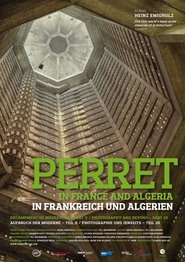 Lauded artistfilmmaker Heinz Emigholz Schindlers Houses...
Lauded artistfilmmaker Heinz Emigholz Schindlers Houses...Perret in France and Algeria 2012
Lauded artist-filmmaker Heinz Emigholz (Schindler's Houses) offers an exquisite excursus on the work of pioneering French architect Auguste Perret, including privileged views of his innovative concrete structures in Algeria and such magnificent landmarks as Paris' Art Deco Théâtre des Champs Elysées. (TIFF)
 The third autobiography in the series...
The third autobiography in the series...Parabeton: Pier Luigi Nervi and Roman Concrete 2012
The third autobiography in the series deals with modern architecture. For the grand finale, he covers a broad historical spectrum: Parabeton tells of the great Roman concrete buildings from the start of the Common Era and compares them with Pier Luigi Nervi’s work, the Italian master of concrete construction. As concrete can be made into many different shapes, the buildings and the domes, slopes and spiral staircases they contain have an innovative, seminal quality. Those familiar with Emigholz's work will note that the skewed camera angles used in the past are replaced by straight-on views. Moreover, the ancient constructions seem more dynamic than those of the last century. Almost devoid of people, the images we know from his preceding films make the ruins from the 1930s to the 70s, the familiar cement constructions of daily life with their play of light and shadow or even the Pope’s Audience Hall appear more ghostly than the famous sights of the ancient world.
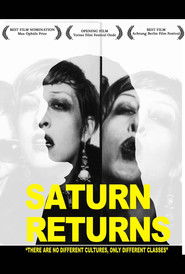 Lucy a privileged North American in...
Lucy a privileged North American in...Saturn Returns 2009
Lucy, a privileged North American in contemporary Berlin, living a life of post Punk hedonism, roams the streets with her best friend, Derek. Together they use the city like a playground, a stage, and a never ending party. Into their lives enters Galia, a young Israeli woman carrying the promise of a better, cleaner way of living. A tribute to Punk underground films turns into a melodrama in "Saturn Returns", mirroring Lucy and Galia's modulating states of mind. Our and their look into each other's life and culture, becomes an investigation of empty facades. The film was constructed by both improvised and pre-scripted scenes, as required by the nature of each scene.
 Both a beguiling meditation on the...
Both a beguiling meditation on the...Schindler's Houses 2007
Both a beguiling meditation on the aesthetic of a city and a loving tribute to a great architect, Heinz Emigholz's documentary examines urban Los Angeles through the houses of Austrian-American architect Rudolph Schindler. Eschewing the documentary conventions of voice-over narration and archival photos, Emigholz mixes artfully composed images of more than 40 Schindler creations with an ambient soundscape to produce a singular viewing experience.
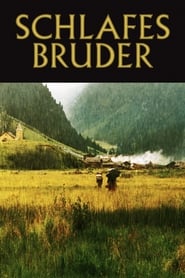 In the beginning of the 19th...
In the beginning of the 19th...Brother of Sleep 1995
In the beginning of the 19th century, Johannes Elias Alder is born in a small village in the Austrian mountains. While growing up he is considered strange by the other villagers and discovers his love of music, especially rebuilding and playing the organ at the village church. After experiencing an "acoustic wonder", his eye color changes and he can hear even the most subtle sounds.
 A German Platoon is explored through...
A German Platoon is explored through...Stalingrad 1993
A German Platoon is explored through the brutal fighting of the Battle of Stalingrad. After half of their number is wiped out and they're placed under the command of a sadistic captain, the platoon lieutenant leads his men to desert. The platoon members attempt escape from the city, now surrounded by the Soviet Army.
 Kreidler and Heinz Emigholz complete their...
Kreidler and Heinz Emigholz complete their...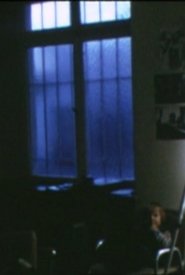 Home movies shot on Super 8mm...
Home movies shot on Super 8mm...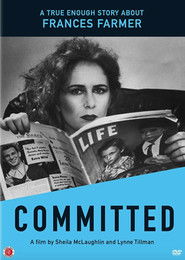 Stylized black and white biography of...
Stylized black and white biography of... Max Taurus a sort of amateur...
Max Taurus a sort of amateur...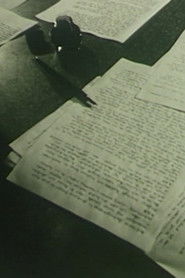 Adaptation of the novel Bartleby the...
Adaptation of the novel Bartleby the...